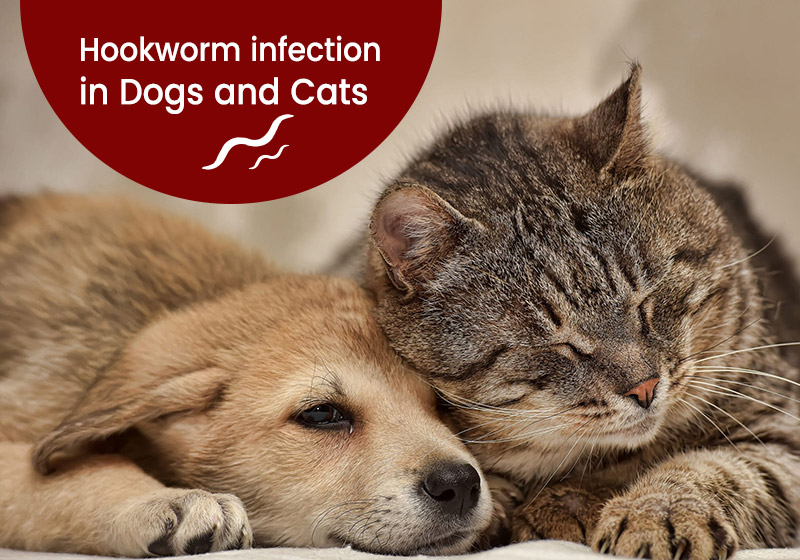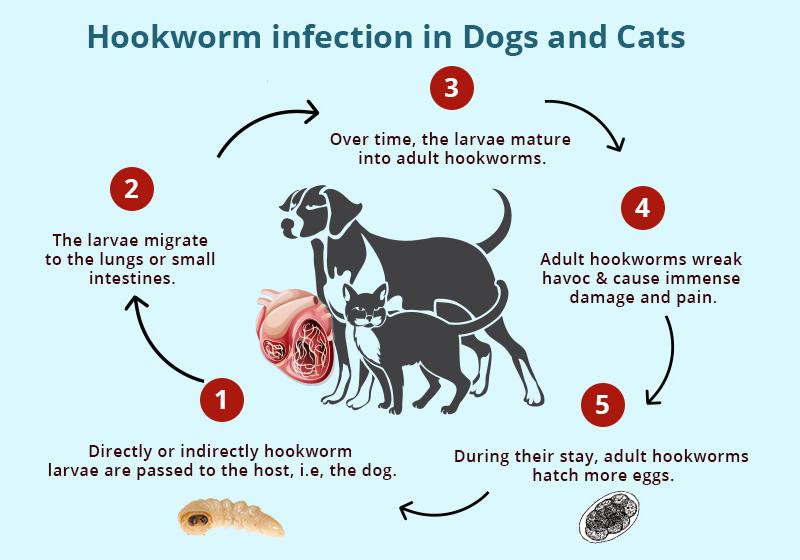Hookworm is a parasitic worm that infests the intestines of humans, dogs, and cats. It belongs to genera Necator and Ancylostoma of Nematoda class.

Lifecycle of Hookworms
Adult male and female hookworms mate in a dog’s intestine. Every day, the female worm lays several eggs. These eggs are released into the environment via feces. Within 24 to 48 hours, they develop into first-stage larvae (L1) and hatch. During the next 5 to 10 days, L1 molts into infective third-stage larvae and, L3 then infects a host by ingestion or penetrating into the skin.
Ingestion: L3 hookworms pass through the stomach into the small intestine. Here they infect the glands that line the intestinal wall. They emerge and mature into adults after a few days.
Skin penetration: L3 hookworms enter the body through the skin. They then travel through the bloodstream to the lungs, where they enter the tracheaand are swallowed. They end up in the intestine.
Transmammary: Arrested larvae can reactivate during parturition and, can be passed on to puppies via the breastfeeding process. It is one of the most common ways how puppies are infected.






